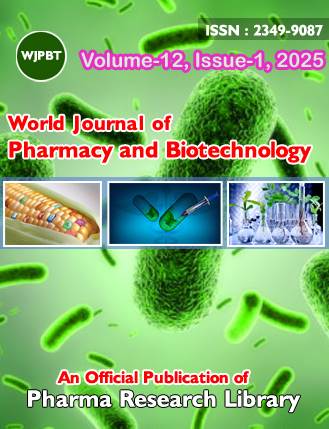A Review on Novel Pharmacotherapeutic Approaches for the Prevention and Management of Varicella-Zoster Virus Infections
DOI:
https://doi.org/10.30904/j.wjpbt.2025.4845Keywords:
Varicella-zoster virus, Skin lesions, Dermatomal distribution, Lifelong immunity, Gold standard of treatmentAbstract
Varicella-zoster virus (VZV), also known as human herpesvirus 3 (HHV-3) has a double-stranded DNA genome of 125 kb, encoding for approximately 71 open reading frames (ORFs). The herpesvirus family includes three subfamilies, α, β, and γ-herpesvirinae. VZV together with herpes simplex virus 1 and 2 (HSV-1 and HSV-2) belong to the α-herpesvirinae, characterized by establishment of latency in neurons. VZV is the causative agent of chickenpox (varicella), a common infantile illness. Like all herpesviruses, VZV undergoes a lifelong latent state following primary infection. During latency, the viral DNA persists in the dorsal root ganglia and cranial root ganglia. VZV reactivation produces skin lesions characteristic of herpes zoster (shingles), causing significant morbidity, but rarely mortality. Herpes zoster is characterized by a localized rash in a unilateral, dermatomal distribution and is often associated with severe neuropathic pain. VZV is highly infectious and enters the body via the respiratory tract, followed by rapid spread from the pharyngeal lymphoid tissue to circulating T lymphocytes. After 10–21 days, the virus arrives at the skin, producing the typical vesicular rash characteristic of varicella. In most individuals, VZV infection results in lifelong immunity. A potential anti-VZV drug candidate needs to be at least as effective and safe as the gold standard of treatment for HZ, i.e., valacyclovir. It will need to have also some advantages over valacyclovir, such as longer intracellular half-life allowing once a day dosing, superior efficacy, independence of TK for activation and/or target another enzyme than the DNA polymerase.
Downloads
Published
Issue
Section
License
Copyright (c) 2025 Author

This work is licensed under a Creative Commons Attribution-NonCommercial 4.0 International License.

